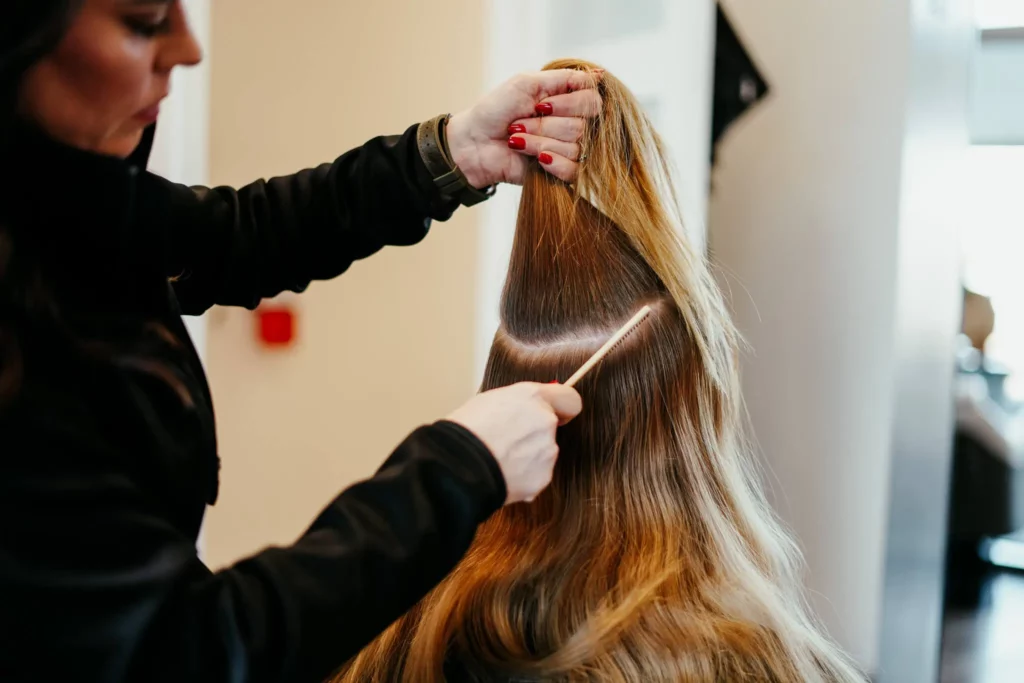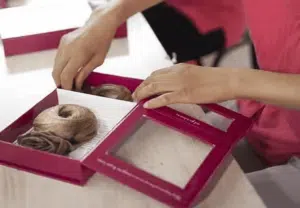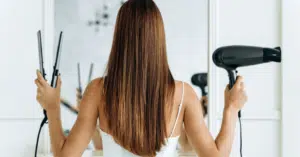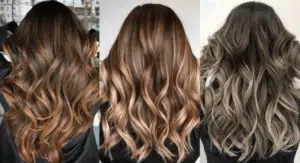You want volume and length, but you fear damage and visible bonds. Conflicting advice online makes choices hard. You need clear, pro-safe options that respect thin hair.
Yes—extensions can be worth it for thin or fine hair when you choose light systems, match weight to density, and follow simple care rules. Recommended: invisible tape, genius weft (micro-row), halo hair, and carefully planned K tips for long-wear cases.

You want a plan you can act on today. Use this chair-side script: value, best methods, pros and cons, safe install notes, pricing logic, maintenance, and red flags. The tables help you standardize orders and client education.
Are hair extensions worth it for thin hair?
Clients with thin hair want fullness that looks real. They fear traction, slip, and visible tabs. The wrong choice brings returns and bad reviews.
Extensions are worth it for thin hair when the method is light, the weight matches the section, and the client follows basic care. Invisible tape, genius weft micro-rows, halo hair, and well-planned K tips give natural results with low stress.
What “worth it” means for thin hair clients
“Worth it” means comfort, realism, and simple upkeep. Fine hair shows everything: tabs, tracks, beads. Keep systems light and flat, and place them below the crown line. Choose full cuticle hair for natural movement and low tangle with daily heat. Keep density modest. Do not chase thick volume on a delicate base. Explain the why behind each step: smaller pieces near the face, slightly more weight at the back, and no stacking of bonds. Teach loop-brush technique, no oils at roots, and a night braid. Pre-book maintenance before the client leaves.
Owners should watch ROI through scheduling. Thin-hair clients who stay inside a 6–10 week cycle for tapes/rows, or a 12–16 week cycle for K tips, keep hair safe and rebook. This creates steady revenue and strong retention. The value is a calm routine with predictable results for both salon and client.
What is the best type of hair extensions for fine hair?
Thin hair needs flat attachments and gentle weight. Bulky systems show. Heavy systems pull. Lightweight, thin-top methods win.
Recommended first-line options: invisible tape, genius weft micro-rows, and halo hair. Add K tips for clients who want sealed bonds and longer intervals with careful mapping.
How to group methods for fine hair
Group by attachment size and tension. Invisible tape uses injection technology with a skin-like top that hides well and spreads weight across a tab. Genius weft has an ultra-thin, flexible seam that sits flatter than classic machine wefts; micro-rows distribute load across a wide arc. Halo hair uses a clear wire; there is no attachment on base hair, so traction is near zero—ideal for sensitive scalps or first-timers. K tips are strand-based and require tight control of weight and spacing; use lightweight strands in fragile zones and keep bonds small and smooth.
Principle for fine hair: the thinner the top, the safer the blend; the wider the load spread, the gentler the tension. Full cuticle, single-donor hair remains non-negotiable for realism and longevity.
Invisible tape in hair
Thin hair needs ultra-flat tabs and a natural “scalp” look. Many tapes are visible. Injection tape solves that with a skin-like top.
Invisible tape is strong for fine hair when maps are clean and products avoid the adhesive zone. Tabs lie flat, blend well, and feel light.

Pros and cons:
Pros: ultra-flat top, soft edge, quick installs, easy removal, clean face-framing blend.
Cons: adhesive care rules matter; oils at roots cause slip; over-stacking adds bulk.
For fine hair: Injection top mimics hair growing from the scalp and spreads weight across the tab, so attachments stay flatter and less visible on sparse areas.
Placement and inventory you can standardize
| Item | Recommended Choice | Notes for fine hair |
|---|---|---|
| Tab width | Standard + micro | Micro near hairline/parting |
| Density per tab | Light to medium | Add positions, not heavier tabs |
| Row mapping | 2–3 rows max | Keep rows low; avoid crown stacking |
| Maintenance | 6–8 weeks | Prevent drift and product migration |
| Fiber | Full cuticle, single donor | Natural swing; safer brushing |
Genius weft hair
Classic wefts can feel bulky on thin hair; seams can print in updos. A thinner seam with less return hair solves this.
Genius weft uses a very thin, flexible seam. It blends on fine hair and spreads weight across a row when tension stays soft and sections are wide.

Pros and cons:
Pros: ultra-thin seam, minimal beard hair, customizable cutting with low shed, light feel, long wear.
Cons: needs careful beaded track/sewing; over-tightening or over-layering creates pressure points.
For fine hair: The ultra-thin seam sits close to the scalp, while each weft strip is light; row-based distribution reduces traction on delicate roots compared with bulky tracks.
Row design and QC checklist
| Step | Key Action | Success Signal |
|---|---|---|
| Create anchor track | Micro-beads with soft tension | Client feels no pinch |
| Place weft | Follow head shape; trim as needed | Seam flat; no lift/ripples |
| Stitch and secure | Low-tension stitches along arc | Row moves with head; no hot spots |
| Blend and finish | Point-cut; avoid blunt lines | Natural swing; no shelf at seam |
| Maintenance | 6–10 weeks | Row remains flat; beads not pressing |
Best halo extensions for fine hair
Some clients want zero bond and zero stress. Halo offers that with a clear wire and instant volume. It is ideal for beginners, photoshoots, and sensitive scalps.

Halo works for fine hair when the piece is light, the color match is clean, and the wire fits correctly. It adds quick fullness with no attachment on base hair.
Pros and cons:
Pros: no bonds, no adhesive, fast on/off, zero traction on base hair.
Cons: not for 24/7 wear; can shift in intense activity or high ponies; requires blending practice.
For fine hair: No attachment touches bio hair; the wire carries the load, so traction is virtually zero—perfect for ultra-fine density or sensitive scalps.
Wire fitting tips
- Seat wire behind the occipital bone for grip.
- Choose lighter density; heavy halos look artificial on thin hair.
- Tease a micro-shelf at crown to veil the wire.
- Use rooted/balayage tones for multi-shade blending.
K tip hair
Some thin-hair clients prefer sealed bonds and longer intervals. K tips can work if strand weight and spacing are tightly controlled and removal is on time.
K tips suit fine hair only with lightweight strands, gentle spacing, and a strict 12–16 week removal. Bonds must stay tiny and smooth.

Pros and cons:
Pros: precise strand placement, tiny bonds for updos, strong styling freedom.
Cons: heat at install, longer chair time, solvent removal, real learning curve.
For fine hair: Custom lightweight strands (0.5–0.8 g) and wider spacing reduce point-load; small sealed bonds stay discreet and comfortable when mapped below fragile zones.
Strand planning and guardrails
- Use 0.5–0.8 g near hairlines/temples; 0.8–1.0 g in stronger zones.
- Keep bonds off high-friction crown paths.
- Pre-book removal at 12–16 weeks; do not extend.
- Educate: loop brush, no oils at roots, night braid.
Do hair extensions damage fine hair?
This is the core fear. Risk comes from weight, friction, and time—not one method alone.
Extensions do not damage fine hair when attachments are flat, weight matches the section, and removal is on time. Full cuticle hair lowers tangles and stress.
How to reduce risk in practice
Reduce weight per attachment and increase the area carrying load. Invisible tape spreads weight across a tab; genius weft spreads across a row; halo places weight on a wire with zero bond; K tips use the lightest strands in fragile zones. Reduce friction by keeping bonds low, avoiding overlap, and teaching supported brushing. Control time: tapes/rows 6–10 weeks; K tips 12–16 weeks. Late maintenance moves bonds into high-friction zones and traps shed hair.
Choose better fiber. Full cuticle hair moves like natural hair, tolerates heat, and resists matting. Many “damage” reports are fiber failures or overdue removals. Control these inputs and fine hair stays safe.

Care and maintenance for fine hair extensions?
Good care protects thin hair. Clients follow simple rules when you keep them short.
Clients should brush daily with a loop brush, avoid oils at bonds, dry roots fully, and sleep in a loose braid or silk cap. Book timely removals. Keep hot tools away from bonds.
The habits that make results last
Keep care to one page. Wash 2–3× weekly with bond-safe shampoo. Condition mid-lengths to ends only. Brush morning and night; support above attachments. Dry roots after each wash; bonds should not stay damp. Style with heat a finger-width from bonds. Sleep in a low braid or silk bonnet. Swim with pre-wet hair; rinse after; avoid oils at roots. Schedule a check at week 4–6 to trim flyaways and reinforce rules. Set hard removal dates: tapes 6–8 weeks; rows 6–10; K tips 12–16. Do not reward late removals. Protect the client’s base hair first.

My opinion
Choose the method by density, lifestyle, and maintenance habits. For most fine-hair clients, start with invisible tape or a light genius weft row. Add halo for zero-risk days and fast volume. Use K tips only when strand weight and timing are under strict control. Full cuticle hair is non-negotiable.
FAQ
Are extensions worth it for very thin hair?
Yes, with light systems and strict maintenance. Start with invisible tape or halo, then add a light row if needed.
Which method is safest for a first-time fine-hair client?
Halo for zero traction, or a small set of invisible tapes placed low.
Do K tips damage hair on fine clients?
Not when strands are light, spacing is wide, and removal is on time.
How often should thin-hair clients maintain?
Tapes: 6–8 weeks. Rows: 6–10 weeks. K tips: 12–16 weeks.
What hair quality should buyers order?
Full cuticle, single-donor hair for realistic movement and reuse.
Conclusion
For fine hair, keep attachments flat, weight light, and schedules tight. Choose invisible tape, genius weft micro-rows, halo, or carefully planned K tips. Educate simply and pre-book maintenance to protect the base hair.
Hibiscus Hair Manufacturer has been dedicated to producing high-quality hair extensions for 25 years and is a recognized leader in the industry. If you are interested in finding a reliable hair extensions supplier and wholesale for your brand, please visit our website for more information:
HOME





